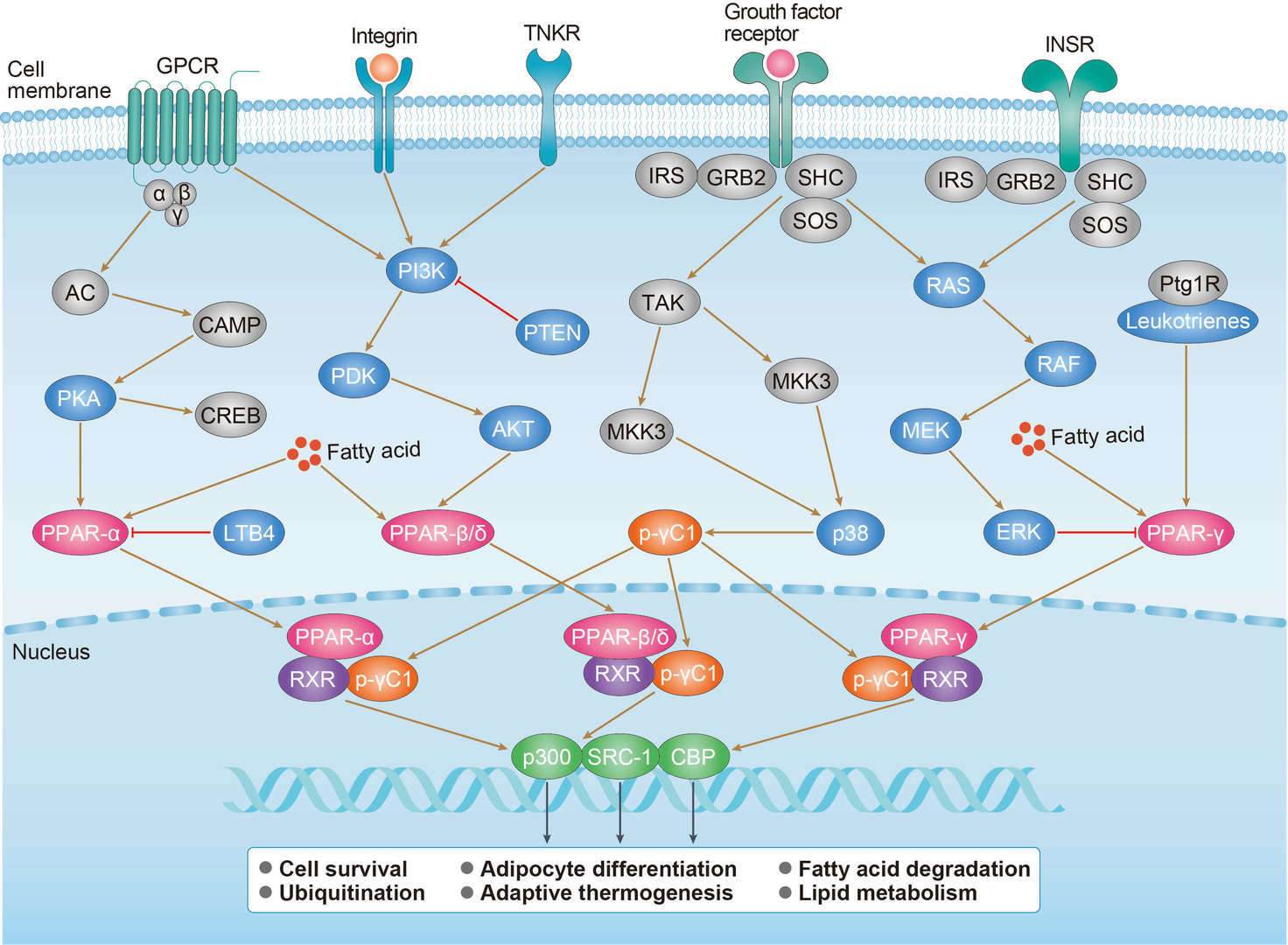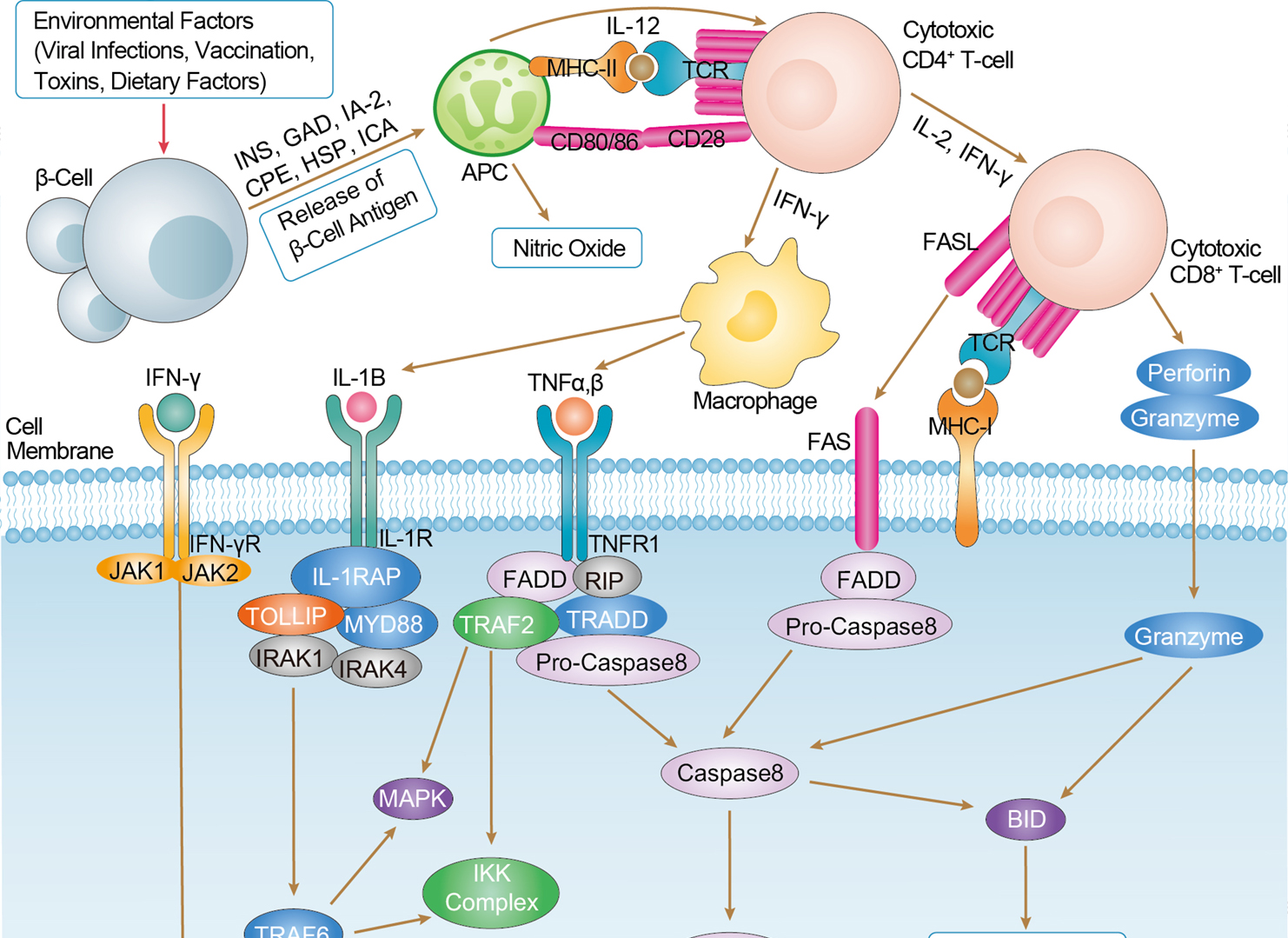Rabbit Anti-INSR Recombinant Antibody (VS3-CJ433)
CAT#: VS3-CJ433
This product is a rabbit antibody that recognizes human, mouse, and rat INSR.










Specifications
- Immunogen
- Recombinant protein
- Host Species
- Rabbit
- Type
- Rabbit IgG
- Specificity
- Human, Mouse, Rat INSR
- Species Reactivity
- Human, Mouse, Rat
- Applications
- WB, ICC, IF
- Conjugate
- Unconjugated
Product Property
- Purification
- Protein A affinity purified
- Purity
- >95% as determined by SDS-PAGE
- Format
- Liquid
- Buffer
- 40% Glycerol, 1% BSA, TBS, pH7.4.
- Preservative
- 0.05% Sodium Azide
- Storage
- Store at 4°C for short term. Aliquot and store at -20°C for long term. Avoid repeated freeze/thaw cycles.
Applications
- Application Notes
- This antibody has been tested for use in Western Blot, Immunocytochemistry, Immunofluorescence.
Target
- Alternative Names
- HHF5; CD220
- Gene ID
- 3643
- UniProt ID
- P06213
- Sequence Similarities
- Belongs to the protein kinase superfamily. Tyr protein kinase family. Insulin receptor subfamily.
- Cellular Localization
- Cell membrane, Endosome, Lysosome, Membrane
- Post Translation Modifications
- After being transported from the endoplasmic reticulum to the Golgi apparatus, the single glycosylated precursor is further glycosylated and then cleaved, followed by its transport to the plasma membrane.
Autophosphorylated on tyrosine residues in response to insulin. Phosphorylation of Tyr-999 is required for binding to IRS1, SHC1 and STAT5B. Dephosphorylated by PTPRE at Tyr-999, Tyr-1185, Tyr-1189 and Tyr-1190. Dephosphorylated by PTPRF and PTPN1. Dephosphorylated by PTPN2; down-regulates insulin-induced signaling.
- Protein Refseq
- NP_000199.2; NP_001073285.1
- Function
- Receptor tyrosine kinase which mediates the pleiotropic actions of insulin. Binding of insulin leads to phosphorylation of several intracellular substrates, including, insulin receptor substrates (IRS1, 2, 3, 4), SHC, GAB1, CBL and other signaling intermediates. Each of these phosphorylated proteins serve as docking proteins for other signaling proteins that contain Src-homology-2 domains (SH2 domain) that specifically recognize different phosphotyrosine residues, including the p85 regulatory subunit of PI3K and SHP2. Phosphorylation of IRSs proteins lead to the activation of two main signaling pathways: the PI3K-AKT/PKB pathway, which is responsible for most of the metabolic actions of insulin, and the Ras-MAPK pathway, which regulates expression of some genes and cooperates with the PI3K pathway to control cell growth and differentiation. Binding of the SH2 domains of PI3K to phosphotyrosines on IRS1 leads to the activation of PI3K and the generation of phosphatidylinositol-(3, 4, 5)-triphosphate (PIP3), a lipid second messenger, which activates several PIP3-dependent serine/threonine kinases, such as PDPK1 and subsequently AKT/PKB. The net effect of this pathway is to produce a translocation of the glucose transporter SLC2A4/GLUT4 from cytoplasmic vesicles to the cell membrane to facilitate glucose transport. Moreover, upon insulin stimulation, activated AKT/PKB is responsible for: anti-apoptotic effect of insulin by inducing phosphorylation of BAD; regulates the expression of gluconeogenic and lipogenic enzymes by controlling the activity of the winged helix or forkhead (FOX) class of transcription factors. Another pathway regulated by PI3K-AKT/PKB activation is mTORC1 signaling pathway which regulates cell growth and metabolism and integrates signals from insulin. AKT mediates insulin-stimulated protein synthesis by phosphorylating TSC2 thereby activating mTORC1 pathway. The Ras/RAF/MAP2K/MAPK pathway is mainly involved in mediating cell growth, survival and cellular differentiation of insulin. Phosphorylated IRS1 recruits GRB2/SOS complex, which triggers the activation of the Ras/RAF/MAP2K/MAPK pathway. In addition to binding insulin, the insulin receptor can bind insulin-like growth factors (IGFI and IGFII). Isoform Short has a higher affinity for IGFII binding. When present in a hybrid receptor with IGF1R, binds IGF1. PubMed:12138094 shows that hybrid receptors composed of IGF1R and INSR isoform Long are activated with a high affinity by IGF1, with low affinity by IGF2 and not significantly activated by insulin, and that hybrid receptors composed of IGF1R and INSR isoform Short are activated by IGF1, IGF2 and insulin. In contrast, PubMed:16831875 shows that hybrid receptors composed of IGF1R and INSR isoform Long and hybrid receptors composed of IGF1R and INSR isoform Short have similar binding characteristics, both bind IGF1 and have a low affinity for insulin. In adipocytes, inhibits lipolysis (By similarity).
Customer Review
There are currently no Customer reviews or questions for VS3-CJ433. Click the button above to contact us or submit your feedback about this product.
Submit Your Publication
Published with our product? Submit your paper and receive a 10% discount on your next order! Share your research to earn exclusive rewards.
Related Signaling Pathways
Related Diseases
Downloadable Resources
Download resources about recombinant antibody development and antibody engineering to boost your research.
Product Notes
This is a product of Creative Biolabs' Hi-Affi™ recombinant antibody portfolio, which has several benefits including:
• Increased sensitivity
• Confirmed specificity
• High repeatability
• Excellent batch-to-batch consistency
• Sustainable supply
• Animal-free production
See more details about Hi-Affi™ recombinant antibody benefits.
Datasheet
MSDS
COA
Certificate of Analysis LookupTo download a Certificate of Analysis, please enter a lot number in the search box below. Note: Certificate of Analysis not available for kit components.
Protocol & Troubleshooting
We have outlined the assay protocols, covering reagents, solutions, procedures, and troubleshooting tips for common issues in order to better assist clients in conducting experiments with our products. View the full list of Protocol & Troubleshooting.
Isotype Control
- CAT
- Product Name
Secondary Antibody
- CAT
- Product Name
See other products for "INSR"
Select a product category from the dropdown menu below to view related products.
| CAT | Product Name | Application | Type |
|---|---|---|---|
| MOB-1236z | Mouse Anti-INSR Recombinant Antibody (clone 25F8) | ELISA, FC, ICC, IF, IHC, FuncS | Mouse IgG1, κ |
| PABL-246 | Mouse Anti-INSR Recombinant Antibody (clone 83-7) | WB, ELISA, FuncS | Mouse IgG |
| HPAB-0129-YC | Mouse Anti-INSR Recombinant Antibody (HPAB-0129-YC) | ELISA, FC | Mouse IgG |
| ZG-0028U | Rabbit Anti-INSR Recombinant Antibody (clone 4B2) | ELISA, IF | Rabbit IgG |
| VS3-WK571 | Rabbit Anti-INSR Recombinant Antibody (clone JM22-38) | WB, ELISA | Rabbit IgG |
| CAT | Product Name | Application | Type |
|---|---|---|---|
| TAB-441CL | Human Anti-INSR Recombinant Antibody (TAB-441CL) | ELISA | Human IgG |
| CAT | Product Name | Application | Type |
|---|---|---|---|
| PSBL-246 | Mouse Anti-INSR Recombinant Antibody (clone 83-7); scFv Fragment | WB, ELISA, FuncS | Mouse scFv |
| HPAB-0129-YC-S(P) | Mouse Anti-INSR Recombinant Antibody; scFv Fragment (HPAB-0129-YC-S(P)) | ELISA, FC | Mouse scFv |
| HPAB-2351LY-S(P) | Human Anti-INSR Recombinant Antibody; scFv Fragment (HPAB-2351LY-S(P)) | ELISA, WB | Humanized scfv |
| HPAB-2352LY-S(P) | Human Anti-INSR Recombinant Antibody; scFv Fragment (HPAB-2352LY-S(P)) | ELISA, WB | Humanized scfv |
| HPAB-2353LY-S(P) | Human Anti-INSR Recombinant Antibody; scFv Fragment (HPAB-2353LY-S(P)) | ELISA, WB | Humanized scfv |
| CAT | Product Name | Application | Type |
|---|---|---|---|
| PFBL-246 | Mouse Anti-INSR Recombinant Antibody (clone 83-7); Fab Fragment | WB, ELISA, FuncS | Mouse Fab |
| PFBZ-083 | Mouse Anti-INSR Recombinant Antibody (clone 83-14); Fab Fragment | WB, FuncS | Mouse Fab |
| HPAB-0129-YC-F(E) | Mouse Anti-INSR Recombinant Antibody; Fab Fragment (HPAB-0129-YC-F(E)) | ELISA, FC | Mouse Fab |
| HPAB-2351LY-F(E) | Human Anti-INSR Recombinant Antibody; Fab Fragment (HPAB-2351LY-F(E)) | ELISA, WB | Humanized Fab |
| HPAB-2352LY-F(E) | Human Anti-INSR Recombinant Antibody; Fab Fragment (HPAB-2352LY-F(E)) | ELISA, WB | Humanized Fab |
| CAT | Product Name | Application | Type |
|---|---|---|---|
| TAB-711LC | Human Anti-INSR Recombinant Antibody (TAB-711LC) | ELISA, FC, FuncS | Human IgG |
| TAB-712LC | Human Anti-INSR Recombinant Antibody (TAB-712LC) | ELISA, FC, Agonist, FuncS | Human IgG |
| TAB-711LC-S(P) | Human Anti-INSR Recombinant Antibody; scFv Fragment (TAB-711LC-S(P)) | ELISA, FC | Human scFv |
| TAB-712LC-S(P) | Human Anti-INSR Recombinant Antibody; scFv Fragment (TAB-712LC-S(P)) | ELISA, FC | Human scFv |
| PABX-124-S (P) | Recombinant Mouse Anti-IR Antibody scFv Fragment (Fab83-14) | Neut, FuncS | scFv |
| CAT | Product Name | Application | Type |
|---|---|---|---|
| PABX-124 | Recombinant Mouse Anti-IR Antibody (Fab83-14) | Neut, FuncS | IgG |
| PABX-125 | Recombinant Mouse Anti-IR Antibody (Fab83-7) | WB, ELISA, FuncS | IgG |
| PABX-124-F (E) | Recombinant Mouse Anti-IR Antibody Fab Fragment (Fab83-14 ) | Neut, FuncS | Fab |
| PABX-125-F (E) | Recombinant Mouse Anti-IR Antibody Fab Fragment (Fab83-7 ) | WB, ELISA, FuncS | Fab |
| CAT | Product Name | Application | Type |
|---|---|---|---|
| MHC-LC1205 | PE-H-2Kb/Mouse Insr (GNYSFYAL) MHC Tetramer | FCM | |
| MHC-LC1206 | APC-H-2Kb/Mouse Insr (GNYSFYAL) MHC Tetramer | FCM | |
| MHC-LC1207 | BV421-H-2Kb/Mouse Insr (GNYSFYAL) MHC Tetramer | FCM |
| CAT | Product Name | Application | Type |
|---|---|---|---|
| NEUT-1533CQ | Mouse Anti-INSR Recombinant Antibody (NEUT-1533CQ) | Inhib, IP | Mouse IgG2a |
| NEUT-1535CQ | Mouse Anti-INSR Recombinant Antibody (clone 47-9) | FC, Block, WB | Mouse IgG1 |
| NEUT-1536CQ | Mouse Anti-INSR Recombinant Antibody (clone 18-44) | FC, ICC, IF, Block, FuncS, IP, WB | Mouse IgG2b |
| CAT | Product Name | Application | Type |
|---|---|---|---|
| NEUT-1534CQ | Mouse Anti-INSR Recombinant Antibody (clone 29B4) | IP, Neut | Mouse IgG1 |
| CAT | Product Name | Application | Type |
|---|---|---|---|
| MOR-1844 | Rabbit Anti-INSR Recombinant Antibody (clone DS1844AB) | ICC, IP, WB | Rabbit IgG |
| MOR-4630 | Rabbit Anti-INSR Recombinant Antibody (clone TH143DS) | WB | Rabbit IgG |
| MOR-4688 | Rabbit Anti-INSR Recombinant Antibody (clone TH202DS) | WB, FC | Rabbit IgG |
| CAT | Product Name | Application | Type |
|---|---|---|---|
| VS-0424-XY155 | AbPlus™ Anti-INSR Magnetic Beads (1.B.109) | IP, Protein Purification |
| CAT | Product Name | Application | Type |
|---|---|---|---|
| VS-0225-XY148 | CytoStream™ Mouse Anti-INSR Recombinant Antibody (VS-0225-XY148) | FC | Mouse IgG1, kappa |
| CAT | Product Name | Application | Type |
|---|---|---|---|
| VS-0325-FY78 | Mouse Anti-INSR scFv-Fc Chimera (VS-0325-FY78) | IA | Mouse IgG1, scFv-Fc |
| CAT | Product Name | Application | Type |
|---|---|---|---|
| VS-0425-YC382 | Recombinant Anti-INSR Vesicular Antibody, EV Displayed (VS-0425-YC382) | ELISA, FC, Neut, Cell-uptake |
| CAT | Product Name | Application | Type |
|---|---|---|---|
| VS-0525-XY3571 | Anti-INSR Immunohistochemistry Kit | IHC | |
| VS-0525-XY3572 | Anti-Human INSR Immunohistochemistry Kit | IHC |
| CAT | Product Name | Application | Type |
|---|---|---|---|
| VS-0525-YC114 | Recombinant Anti-INSR (AA 191-290 x AA 485-592) Biparatopic Antibody, Tandem scFv (Clone IR 18-146 x Clone IR 47-46) | ELISA | Tandem scFv |
Popular Products

Application: ELISA, IP, FC, FuncS, Neut, IF, ICC

Application: FuncS, IF, Neut, ELISA, FC, IP, ICC

Application: WB, FuncS, IF, Neut, ELISA, FC, IP

Application: Neut, ELISA, IF, IP, FuncS, FC, ICC

Application: WB, Neut, FuncS

Application: ELISA, FC, WB, Block

Application: ELISA, IHC, FC, IP, IF, Inhib

Application: ELISA, IHC, FC, IP, IF, Inhib
-3.jpg)
Application: ELISA, WB

Application: Inhib, FC, WB

Application: ELISA, Inhib, FuncS
For research use only. Not intended for any clinical use. No products from Creative Biolabs may be resold, modified for resale or used to manufacture commercial products without prior written approval from Creative Biolabs.
This site is protected by reCAPTCHA and the Google Privacy Policy and Terms of Service apply.













 PPAR Signaling Pathway
PPAR Signaling Pathway
 Type I Diabetes Mellitus
Type I Diabetes Mellitus













